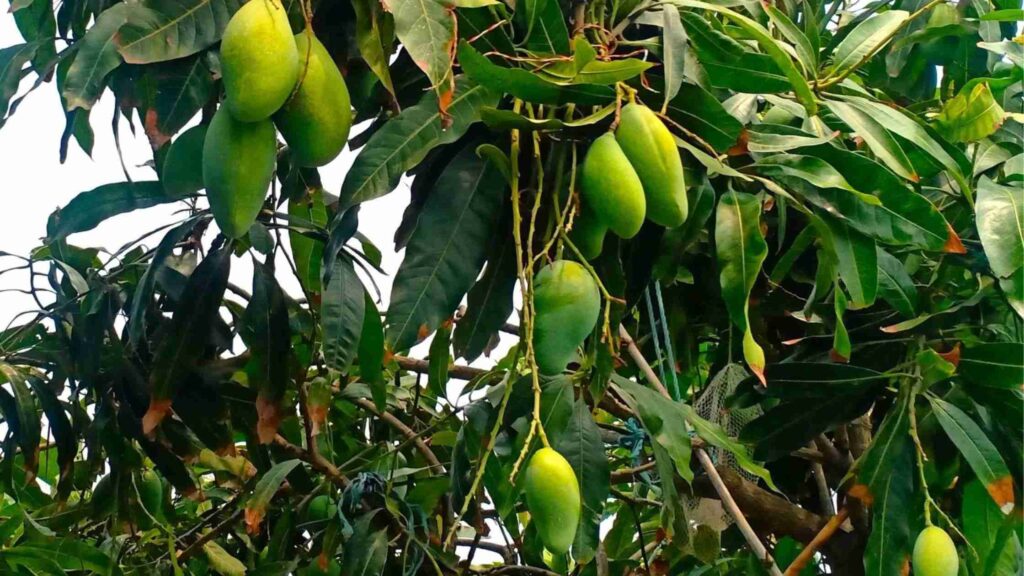I will demonstrate how to grow jujube fruit in a container and achieve a bountiful harvest. I will explain techniques to produce dozens of large, crunchy, juicy, and sweet fruits from even small plants, 100% organically. This step-by-step guide will cover proper care for the plant, with updates spanning 8 months. One of the easiest fruits to grow in a pot is the jujube, also known as apple ber or Chinese date. This Thai variety is crunchy, sweet, and juicy, with a taste similar to an apple. You can easily grow it at home.
Planting Grafted Jujube Plant
You can grow jujube from seeds or grafted plants. To grow from seeds, use fully ripened jujube from a good variety and extract the seeds. I have a 6-month-old jujube grafted plant from a local nursery in my city. The advantage of buying a grafted plant is that it starts fruiting very soon than extracted from seeds.
Transplanting the Grafted Plant in a Container

The jujube plant requires a large pot as its roots spread extensively. Growing it in a small pot may result in smaller or fewer fruits. I transplanted the grafted plant into a container measuring at least 16-20 inches wide and 18-20 inches deep. I’ve lined the inner part with a tarp insulated it with dry leaves, and made drainage holes. When the plant grows larger, it will be easier to remove it for repotting. Jujube plants need well-drained, porous, and nutrient-rich soil for optimal growth. When I transplanted, I avoided covering the grafted part under the soil to prevent rotting. While jujube fruit isn’t overly particular about soil type, it thrives in any well-drained soil. However, when it is grown in a container, it requires rich soil with micronutrients. Jujube plants flourish in full sunlight, so for optimal fruiting, place the container where it receives maximum sunlight.
Soil Selection
To create the best potting soil, I mixed 50% garden soil, 30% compost, and 20% cocopeat or river sand. Additionally, I added 2 handfuls of neem cake powder, which acts as an organic fungicide. After 2 months of transplanting, the plant has settled in and begun flowering. New branches have also developed, and the plant then stands at a height of around 18 inches. Four months after transplanting, flowering has commenced. To encourage more flowers, I feed the plants with phosphorus-rich organic fertilizers such as cow dung compost or mustard cake compost tea. Phosphorus is essential for producing flower buds and fruit, promoting root development, and building strong, healthy plants. After 5 months, the plant is now full of flowers and some fruits as well.
Fertilizing and Watering the Jujube Plant

The majority of the blooms began to transform into young fruits after 7 months after the blossoming season. These young fruits require around eight months to reach their full maturity. For good fruiting at this point, phosphorus-rich organic fertilizer is essential. I mixed in a small amount of bone meals to satisfy Jujube’s dietary needs. Phosphorus, a crucial ingredient for robust plant growth, is found in bone meal at a percentage of 12 to 16 percent. Because jujubes don’t need much fertilizer—just a spoonful of organic compost once a month—fertilize your plants once a month. This plant needs moderate watering; however, avoid overwatering it as this might lead to root rot. Fruit drops can result from overwatering.
Harvesting Stage

After 8 months since transplanting this jujube plant into the container, it’s now full of fruits. Despite being just a 2-foot plant, it’s bearing dozens of jujube fruits, each weighing around 80 to 100 grams. This fruit is also known as Apple Ber or Green Apple due to its resemblance to apples. To support the weight of the fruits, I’ve provided bamboo stick supports to the branches to prevent them from breaking. When the fruits turn lime green, they are ready to be harvested. Grafted plants typically start bearing fruits after 7-8 months of planting. Normally, when planted in the ground, the plant’s height ranges between 10 to 15 feet, while in containers, it ranges between 5 to 8 feet. It produces fruits twice a year, during the winter and rainy seasons, with the winter season being the best for fruiting.
Jujube fruit has several beneficial properties and is extremely nutrient-rich. Rich in antioxidants, vitamin C, vitamin B complex, and vitamin A, it helps to delay the skin’s aging process. It also strengthens immunity and helps fight off several illnesses, including cancer, HIV, Alzheimer’s disease, and neurological conditions including sleeplessness and anxiety.



